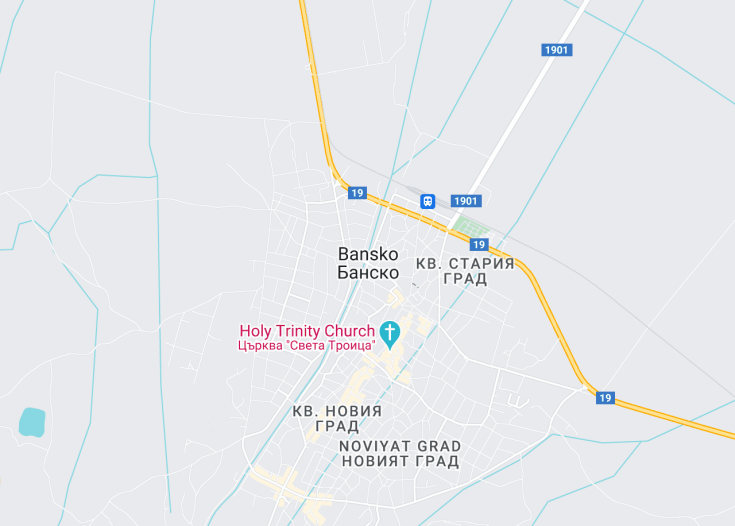Bansko, nestled at the foot of Bulgaria’s picturesque Pirin Mountains, stands as a premier destination for both winter sports enthusiasts and summer adventurers. Renowned for its well-preserved architecture and vibrant cultural heritage, Bansko offers a compelling blend of historical richness and modern convenience. Its ski facilities are among the best in Eastern Europe, complemented by a growing reputation for excellent summer hiking and lively festivals. The town also boasts a variety of traditional restaurants and cozy accommodations, making it a perfect year-round retreat. The combination of natural beauty, active pursuits, and cultural immersion makes Bansko an outstanding choice for travelers.
To make the most of your trip to Bansko, plan your visit during the peak ski season from December to March for optimal snow conditions and lively après-ski activities.
For a quieter, more relaxed experience, consider visiting Bansko in the late spring or early autumn when the town is less crowded and the scenery is particularly stunning.
Top things to do & see in Bansko
Select the following sights and activities to discover best tickets and tours available in Bansko.
Bansko: A Gateway to Adventure
| Country | Bulgaria |
| Time in Bansko | GMT+2 |
| Language spoken | Bulgarian |
| Population | 8,889 (source: latest urban population data) |
| Currency | Bulgarian Lev (лв, BGN) |
| Airports |
|
Bansko, a charming town in Bulgaria, nestled at the foot of the Pirin Mountains, marries the beauty of historic sights with the excitement of modern ski facilities. Bansko is not just Bulgaria’s number one ski resort; it is also a town rich in history lined with cobblestone streets, 18th-century houses, and churches that present a vivid impression of its past. Initially founded by the Slavs in the late antiquity, it gained significance over the centuries, especially during the Bulgarian National Revival period.
The town serves as an excellent base for exploring the surrounding mountains. Outside the winter season, the landscape turns into a lush, verdant setting that’s perfect for hiking, cycling, and mountaineering. Locals and tourists are drawn to the Bansko Jazz Festival, which has gained international recognition, and the hosting of other cultural events that highlight its vibrant communal life and rich traditions.
Bansko’s culinary offerings are a delight, especially its traditional taverns called ‘mehana,’ where visitors can savor local cuisine along with live folk music. The town’s architecture and the warmth of the people provide a cozy, inviting atmosphere that combines the allure of the past with the vibrancy of the present. With its affordable but quality skiing options, Bansko competes on a global scale, attracting skiing enthusiasts from around the world each winter.
Where is Bansko?
Bansko is situated in the southwestern part of Bulgaria, at the base of the Pirin Mountains.
Distances:
| Route | Distance by car | Time by car |
|---|---|---|
| Sofia to Bansko | 97 miles / 156 km | Approx. 2 hours |
| Plovdiv to Bansko | 112 miles / 180 km | Approx. 2.5 hours |
What is Bansko famous for?
Bansko is famous for its world-class ski facilities and picturesque mountain setting, making it a premier ski destination not only in Bulgaria but in Europe.
History
Early History (Pre-Slavic Times – 5th Century)
Bansko, nestled in the heart of Bulgaria, possesses an ancient history that dates back to the early Thracians, an indigenous population known for their metallurgy and artistic craftsmanship, that once inhabited these mountainous terrains. Archaeological findings indicate that the area around what is now Bansko has been settled since these early times.
Slavic Settlement and Byzantine Influence (6th Century – 14th Century)
With the advent of the Slavs into the region, and later the Byzantine influence, Bansko began to develop as a cultural and economic hub in the Razlog Valley. The Slavs brought with them their agricultural practices, contributing to the area’s development.
Ottoman Rule (14th Century – 19th Century)
During the Ottoman occupation, Bansko endured a period of cultural and religious suppression. Despite these challenges, the town maintained a distinct cultural identity, with the establishment of the St. Trinity Church in 1835 being a testament to the enduring spirit of its residents.
Modern Era and Tourism Development (20th Century – Present)
In the 20th century, Bansko transformed into a significant tourist destination, particularly known for its winter sports facilities and well-preserved cultural heritage. The development of ski resorts and modern amenities has brought international attention to the town, blending its rich history with contemporary tourist infrastructure.
Visit Bansko
What to see and do in Bansko, Bulgaria
Explore the quaint streets of Bansko’s historic town, where you can visit the iconic St. Trinity Church with its splendid murals and architecture. The town also hosts the Bansko Museum Complex, offering insights into its rich past. For outdoor enthusiasts, Pirin National Park offers stunning landscapes and numerous hiking trails. During winter, the ski facilities provide excellent opportunities for skiing and snowboarding.
- St. Trinity Church
- Bansko Museum Complex
- Pirin National Park
- Bansko ski resorts
Cultural and Sporting Events in Bansko
Bansko is vibrant with cultural and sporting events throughout the year. The Bansko Jazz Festival, held in August, is one of the highlights, drawing international jazz artists and fans. Winter brings the Bansko Ski World Cup events, showcasing top international alpine ski competitors.
Best time to visit Bansko
The best times to visit Bansko largely depend on your interests. Winter months from December to March are ideal for skiing enthusiasts, while summer offers comfortable temperatures perfect for hiking and exploring the cultural sites.
Is Bansko worth visiting?
Bansko, with its unique blend of historical depth, cultural richness, and modern tourist facilities, certainly makes it a worthwhile destination. Whether you’re a winter sports aficionado or a history enthusiast, Bansko offers a compelling array of activities and scenery that cater to a wide range of preferences.









